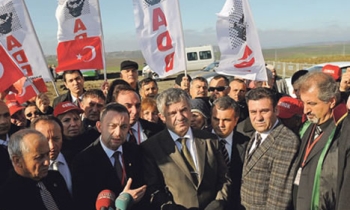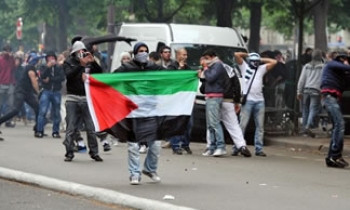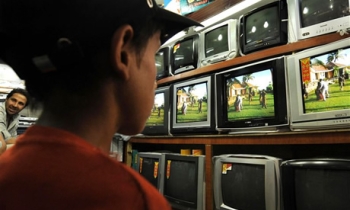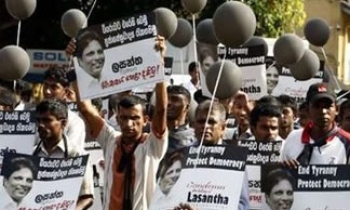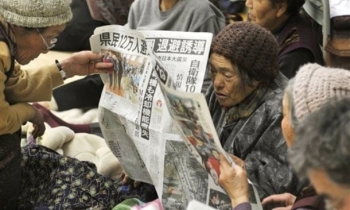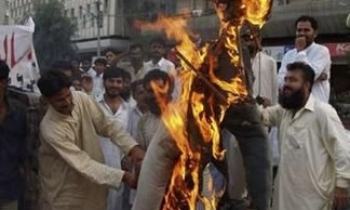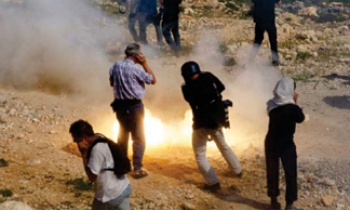There is a stark lack of balanced and independent electoral coverage in the Iranian media.
And, 15 journalists have been threatened or summoned for questioning in the cities of Machhad, Ahvaz, Sanandaj, Khoram Abad, Khohdasht and Tabriz since the campaign for the June presidential 12 election began on May 21. They have been targetted for criticising President Mahmoud Ahmadinejad, who is running for another term, or for clearly expressing a political opinion in their articles.
According to a tally kept by Paris-based Reporters sans Frontières (RSF) the candidates running against President Ahmadinejad have had less than two hours to talk on national radio and TV stations while the president has had 10 times that.
In the four televised debates between the various candidates since the start of the campaign, each was given 40 minutes to speak. But tonight, Ahmadinejad will get 45 minutes of airtime to himself to address voters. Furthermore, some of the reports broadcast after the debates have been biased in his favour.
“Iran’s 46 million voters have been deprived of independent reporting in the national media throughout the campaign,” says RSf, “Iranian journalists are monitored by the authorities and cannot give their fellow citizens objective coverage of the debates and issues.”
RSF says, “There are many state-owned newspapers but their reporting is all the same. The radio and TV stations are used by the government while the so-called opposition newspapers are used above all for factional in-fighting. They do not unfortunately serve as forums where opinions can be expressed freely.”
The pro-reform newspaper Yas-e No (“New Jasmine”) was banned again on June 9 at Tehran prosecutor-general Said Mortazavi’s behest. It had reappeared on the newsstands only six days ago after being banned since May 17. Yas-e No was previously banned for six years for criticising the government.
The newspaper Shahrvand Emrouz was banned on the orders of the ministry of culture and Islamic guidance on November 5 after it published four consecutive issues containing profiles of politicians regarded as future presidential candidates.
The Internet has also been censored. Access to the social-networking website Facebook, for example, was blocked from May 23-26 at the information ministry’s behest on the grounds that it was giving more space to pro-reform political views. Ahmadinejad said there should be “10,000 militiamen for 10,000 blogs” to maximise his party’s online presence. Hackers have hijacked opposition and independent websites and blogs such as the popular site Rooz, which was replaced by a site called Rooz.ir carrying pro-Ahmadinejad information.
“Even the Internet has become a terrain for political struggle, invaded by websites, blogs and commentaries specially created by political parties for the occasion, which have led to many cases of censorship and have prevented Iranians from accessing independently-reported news and information,” says RSF.
The Islamic Republic of Iran’s embassies in Berlin, Paris, Rome and Madrid have meanwhile refused to give foreign journalists accreditation to go and cover the election. In some cases, applications have been mislaid. In other cases, embassy press attachés have demanded pro-Ahmadinejad coverage in return for a visa.
Iran continues to be the Middle East country that jails the most journalists. At the same time, since Ahmadinejad became president in 2005, the heads of the Islamic Republic News Agency (IRNA), the Iranian Students News Agency (ISNA) and other governmental news agencies have been replaced by Ahmadinejad allies. Several news websites such as Rajanews, Mehrnews and Farsnews (which has ties to the security services) have been created to support the president.
In all, more than 100 news media have been censored and more than 100 journalists and bloggers have been arrested and convicted since August 2005.
List of cyber-dissidents and journalists currently held (with date of arrest):
- May 1, 2009: Alireza Saghafi (Rah Ayandeh), in provisional custody
- April 26, 2009: Sajad Khaksari (Galam Moalem), pending trial
- November 18, 2008: Bahman Totonchi (Karfto), sentenced to a year in prison, pending appeal
- August 7, 2008: Massoud Kurdpoor, freelance journalist, sentenced to a year in prison
- July 1, 2007: Mohammad Sadegh Kabovand (Payam-e mardom-e Kurdestan), sentenced to eight years in prison
- January 25, 2007: Adnan Hassanpour (Asou), awaiting sentencing after his death sentence was quashed
- December 18, 2006: Kaveh Javanmard (Karfto), sentenced to three years in prison
- November 1, 2006: Mohammad Hassin Falahieh Zadeh (Alalam), sentenced to three years in prison
- May 1, 2009: Kaveh Mozafari (Change for Equality), in provisional custody
- November 29, 2008: Mojtaba Lotfi, cyber-dissident, sentenced to four years in prison and five years of banishment for disseminating Ayatollah Montazeri’s views and anti-government propaganda
- November 1, 2008: Hossein Derakhshan, blogger (http://www.hoder.com) in provisional custody. There has been no word of him since his arrest.


